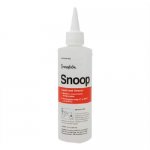Brents347
New member
- 27
- 14
- 3
- Location
- Truckee, CA.
Hey all,
So I am having two major issues with my FLU currently.
First off, I have no clutch disengagement. The clutch works (engages the engine), so I have PTO and the motor does drive the tranny, etc. I just can’t push in the clutch and stop the vehicle. I have to kill the motor. This seemed to start with a low clutch fluid level which I believed led to air in the lines. I have bled the clutch/brakes per the military manual, in the proper order, using pressure at the reservoirs OVER AND OVER but had no success. I have heard that there is another small adjustment for the clutch, that must be within a small adjustment window but I haven’t been able to find any other information about this. What am I missing? I miss having a clutch! Help! Please!
Edit to add; At the beginning of this issue, I could pump up the clutch pedal maybe 5 or even 15 times and get enough pressure out of the system to disengage the clutch briefly enough to get the truck out of gear, but that is now gone.
And secondly. While using the FLU last fall, suddenly while in the middle of a day, I lost air pressure. Not instantly, but as I used the air off the tank it was not replaced and then the tank was empty. I have checked the cross over line. It is clean (so clean it has to be a replacement). I have gone over everything from the compressor back to the tank and with the engine running I find/hear no leaks, but the FLU is so F-ing loud I don’t think I’d hear the air leak anyway. Has anyone ever had a compressor ring break, causing the compressor to not really pump air? Or what else am I missing? With the air line disconnected BEFORE the cross-over, I put my thumb over the line with the engine running and I feel a thump-thump-thump of air as the compressor piston goes up and down but it is not a major push of air. It is easy to keep my thumb over the end of the line. Anyone have any idea how strong the air pulse coming off of the compressor should be?
I appreciate any help and suggestions. I live in the mountains so the FLU has been buried under 6-8’ of snow all winter but spring is now here and I am ready to get these issues fixed and get to work!
Brent
So I am having two major issues with my FLU currently.
First off, I have no clutch disengagement. The clutch works (engages the engine), so I have PTO and the motor does drive the tranny, etc. I just can’t push in the clutch and stop the vehicle. I have to kill the motor. This seemed to start with a low clutch fluid level which I believed led to air in the lines. I have bled the clutch/brakes per the military manual, in the proper order, using pressure at the reservoirs OVER AND OVER but had no success. I have heard that there is another small adjustment for the clutch, that must be within a small adjustment window but I haven’t been able to find any other information about this. What am I missing? I miss having a clutch! Help! Please!
Edit to add; At the beginning of this issue, I could pump up the clutch pedal maybe 5 or even 15 times and get enough pressure out of the system to disengage the clutch briefly enough to get the truck out of gear, but that is now gone.
And secondly. While using the FLU last fall, suddenly while in the middle of a day, I lost air pressure. Not instantly, but as I used the air off the tank it was not replaced and then the tank was empty. I have checked the cross over line. It is clean (so clean it has to be a replacement). I have gone over everything from the compressor back to the tank and with the engine running I find/hear no leaks, but the FLU is so F-ing loud I don’t think I’d hear the air leak anyway. Has anyone ever had a compressor ring break, causing the compressor to not really pump air? Or what else am I missing? With the air line disconnected BEFORE the cross-over, I put my thumb over the line with the engine running and I feel a thump-thump-thump of air as the compressor piston goes up and down but it is not a major push of air. It is easy to keep my thumb over the end of the line. Anyone have any idea how strong the air pulse coming off of the compressor should be?
I appreciate any help and suggestions. I live in the mountains so the FLU has been buried under 6-8’ of snow all winter but spring is now here and I am ready to get these issues fixed and get to work!
Brent
Last edited:


